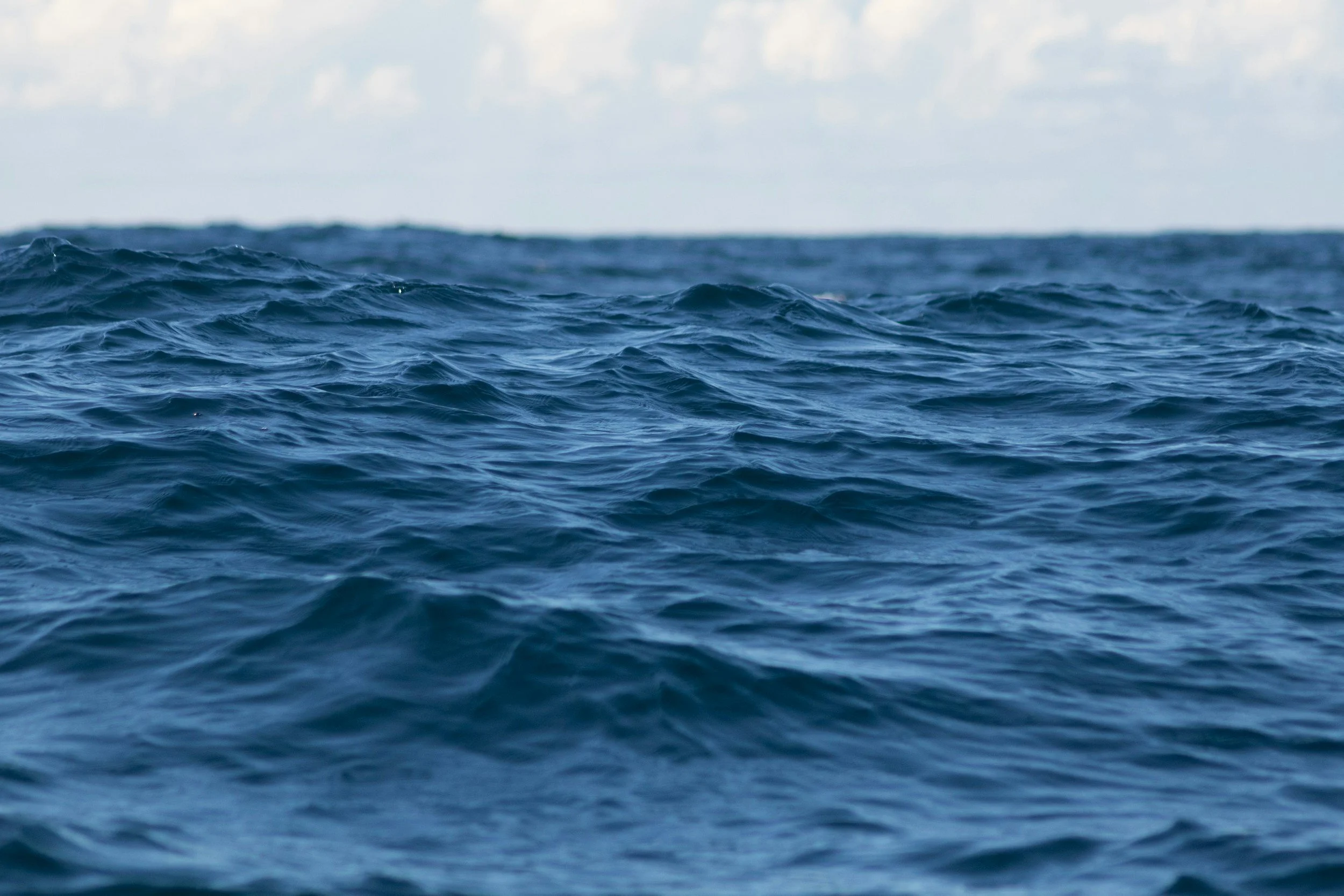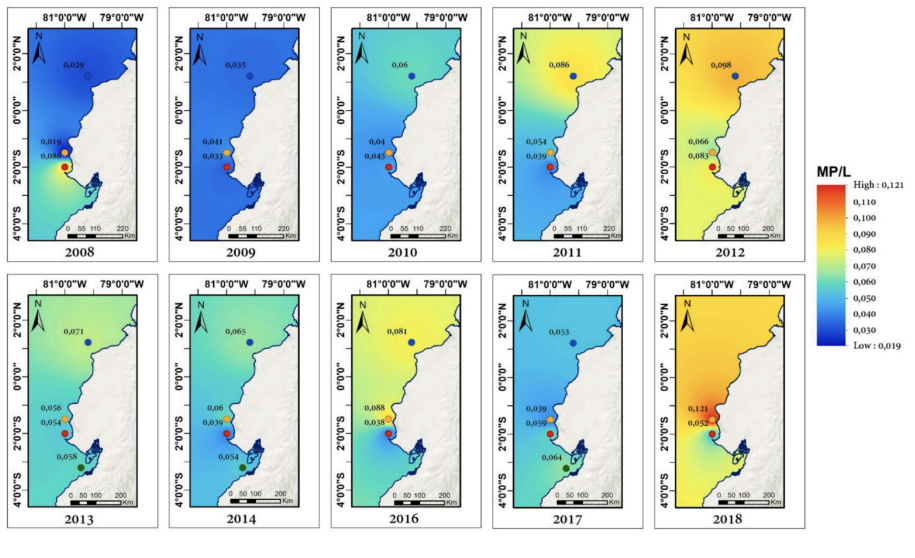MICROPLASTICS
August 19, 2025
New Study Projects Ocean Microplastics to Rise Tenfold by 2100
What researchers found in the Pacific Ocean paints a troubling picture for the future of our seas.
Microplastics on the Rise
The sea has always reflected human activity, from rope fishing nets to global shipping lanes. Now researchers say its newest imprint is plastic, not just in the form of bottles and bags, but as microplastics, fragments smaller than five millimeters that can be nearly impossible to see. A new study on the Pacific Ocean shows that these particles are steadily increasing, with levels doubling in just 11 years. If current trends continue, scientists project they could rise tenfold by the end of the century, reshaping marine ecosystems in ways we are only beginning to understand.
Brand New Study
Researchers from the Leibniz Institute of Freshwater Ecology in Germany, the International Atomic Energy Agency in Monaco, and the Escuela Superior Politécnica del Litoral in Ecuador analyzed ocean samples collected off Ecuador’s coast between 2008 and 2018. Their peer-reviewed study, published in Marine Pollution Bulletin in August 2025, provides one of the most detailed long-term records of microplastic pollution in the Eastern Tropical Pacific. By examining archived zooplankton samples, the team was able to measure how microplastic levels have changed over more than a decade and to forecast what those trends could mean for the future.
Tracking Plastic in the Pacific
Zooplankton are tiny drifting organisms that form the base of the ocean food web, often used as indicators of what is happening in the water around them. To measure how microplastics have changed over time, the researchers re-analyzed samples of zooplankton collected from Ecuador’s coast between 2008 and 2018. During the original surveys, scientists towed fine-mesh nets vertically through the water, filtering thousands of liters at a time and stored the zooplankton collected in case they might be useful in the future. Preserved for more than a decade, those samples became the basis for this new study.
Shockingly, every single sample tested contained microplastics, with fibers making up more than 80 percent of the total. Fibers are long, threadlike pieces of plastic that often come from synthetic clothing such as polyester, nylon, and acrylic. When clothes made from these materials are washed, they shed microscopic threads that flow out with laundry wastewater. Smaller amounts in the samples were thin plastic films, likely from plastic bags or fragments from broken-down bottles or containers.
The maps above show how microplastic levels changed year by year across four stations, with blue meaning fewer particles and yellow to red meaning more. As the decade progressed, the maps shifted from cooler colors to warmer ones, especially in the north, showing a clear rise in microplastic pollution. By 2018, some locations recorded levels several times higher than at the start of the study.
The maps above show the yearly average of microplastics in the Esmeraldas (blue), Puerto Lopez (orange), Salinas (red) and Santa Clara (green). (Bermúdez et al. 2025). https://doi.org/10.1016/j.marpolbul.2025.118437
Should You Be Concerned?
Although we do not yet fully understand the health impacts of microplastics, research has already linked them to inflammation, hormone disruption, and the ability to carry toxic chemicals into the body. The risks grow as microplastics continue to break down into nanoplastics, which are so small they can move through tissues and organs. What enters the ocean eventually makes its way back to us through the food we eat, the water we drink, and even the air we breathe.
This study found that microplastic levels doubled in just 11 years, and scientists project they could rise threefold by 2030, fivefold by 2050, and nearly tenfold by 2100. If that happens, future generations will inherit oceans where microplastics aren’t just common but woven into the marine environment with the same fibers from our synthetic clothing. While the sea has always carried the imprint of human activity, today that imprint is written in plastic.
How You Can Help
It can be easy to feel that individual choices cannot make a dent in a global problem as vast as ocean plastic pollution. Yet this study makes it clear that much of what is being found in the Pacific comes directly from synthetic clothing fibers released in household laundry. CLEANR’s Premium Microplastic Filter for washing machines captures 90%+ of microplastics from the largest source of microplastic pollution, preventing them from entering our environment.
For a normal household, one CLEANR filter can capture the equivalent of more than 15 credit cards worth of plastic fibers every year, keeping them out of our oceans. Multiply that across thousands of homes and the impact becomes significant. While no single solution can solve the crisis, capturing microplastics at the source is one of the most effective steps we can take right now.
About CLEANR
CLEANR builds best-in-class microplastic filters for washing machines that effortlessly remove the largest source of microplastics into the environment. Its technology, VORTX, represents a breakthrough in filtration, with a patented design that is inspired by nature and proven to outperform conventional filtration technologies by over 300%. The company is building a platform filter technology that enables product manufacturers and business customers to materially reduce their microplastic emissions from impacted in-bound and out-bound fluid streams, including residential and commercial washing machine wastewater, in-home water systems, wastewater treatment, textile manufacturing effluents, industrial wastewater, and other sources. www.cleanr.life
Sources:
Bermúdez, J. R., Metian, M., Swarzenski, P. W., Bank, M. S., Bjorøy, Ø., Cajas, J., Bucheli, R., González-Muñoz, R., Lynch, J., Piguave, E., Vargas, N., Vilela, K., Calle, L., Borbor-Cordova, M. J., & Gaibor, N. (2025). Marine microplastics on the rise in the Eastern Tropical Pacific: Abundance doubles in 11 years and a ten-fold increase is projected by 2100. Marine Pollution Bulletin, 221, 118437. https://doi.org/10.1016/j.marpolbul.2025.118437
Ullah, S., Ahmad, S., Guo, X., Ullah, S., Ullah, S., Nabi, G., & Wanghe, K. (2023, January 16). A review of the endocrine disrupting effects of micro and nano plastic and their associated chemicals in mammals. Frontiers in Endocrinology, 13, 1084236. https://doi.org/10.3389/fendo.2022.1084236
More on Microplastics
MICROPLASTICS
February 3, 2023
Microplastics Revealed in the Placentas of Unborn Babies.
All 10 placentas from a study contained microplastics.
MICROPLASTICS
December 12, 2022
How do Microplastics and Microfibers Enter the Environment?
Washing machines are the largest source of microplastic pollution.
MICROPLASTICS
March 11, 2019
Microplastics Found in Human Breast Milk for the First Time.
Studies find microplastics in breast milk, raising concerns about the effects of microplastics on human infants.






